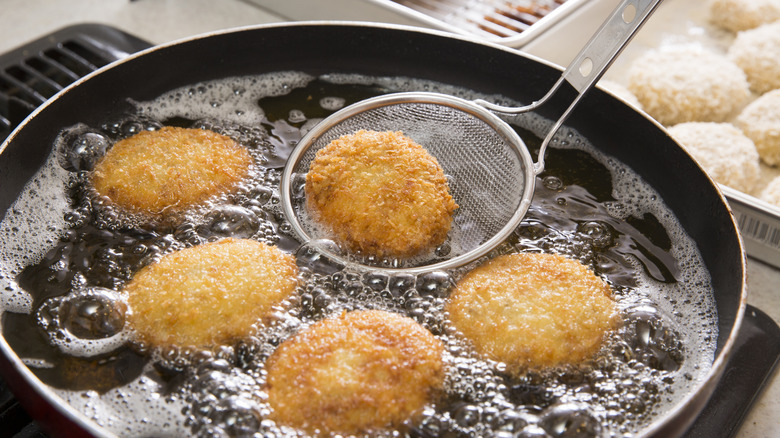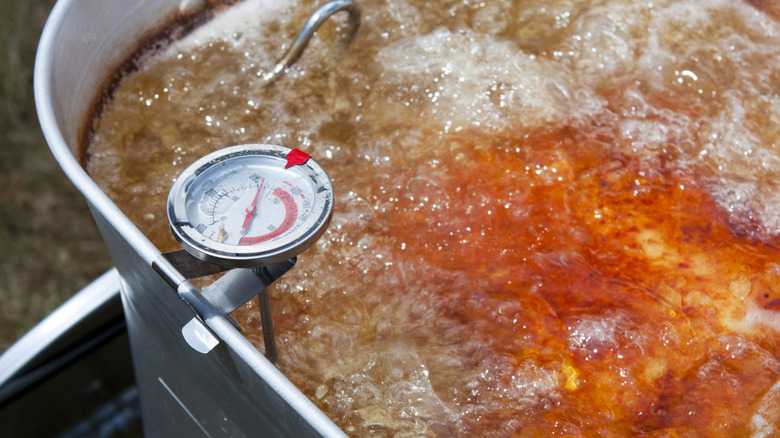The One Thing You Should Never Leave To Chance When Deep-Frying
We may receive a commission on purchases made from links.
Deep-frying is the perfect way to add crunch to a dish, but there is a technique to it. The oil you use matters because different oils have varied smoke points, and for the best texture and flavor of fried food, you should never take a guess on how hot the oil is.
As opposed to pan-frying, the process of deep-frying involves fully submerging food in oil; the amount you need depends on how much food you're cooking, but if you're using a pot, never fill it more than halfway. The hot oil quickly dehydrates the food, heating it through while creating a crispy, flavorful golden crust on the food's exterior thanks to the Maillard reaction.
In order to get that safely cooked interior and crispy exterior, you need the oil to be at the right temperature. The "right" temperature varies depending on what you're cooking, but most foods are fried between 325 and 375 degrees Fahrenheit. The most accurate way to measure oil temperature is by using a thermometer, although there are other ways to estimate temperature if you don't have one.
How to measure your oil's temperature
When frying food, the oil temperature must remain consistent. If it's too low, the food might not cook through and could absorb oil, affecting its crunch and leaving it greasy. On the other hand, a high temperature means burnt food. Since food is colder than the oil when it goes into the fryer, the oil temperature lowers. Avoid overcrowding the pot and adjust the heat as needed to bring the oil temperature back up quickly. For the best deep-frying results, use a neutral oil with a high smoke point, such as corn or vegetable oil.
An oil thermometer is best for accurate oil temperatures. For an easy-to-read measurement, try the ThermoPro TP509 deep-frying thermometer. A tool like this that comes with a pot clip can easily be placed into the oil and remain there for the duration of cooking to maintain an accurate temperature reading. For a more affordable option, Craft911's non-digital candy and oil thermometer still provides an accurate reading and costs less than a digital version.
Though you never want to leave oil temperature to chance, if you're deep-frying and don't have access to a thermometer, you can estimate oil temperature. Add a small amount of batter and see how quickly it bubbles; more bubbles tells you the oil is ready, while less bubbles means it's still too cold. If you don't have batter, use Rachael Ray's oil temperature testing trick and dip a wooden spoon into the oil to check for the same results.

